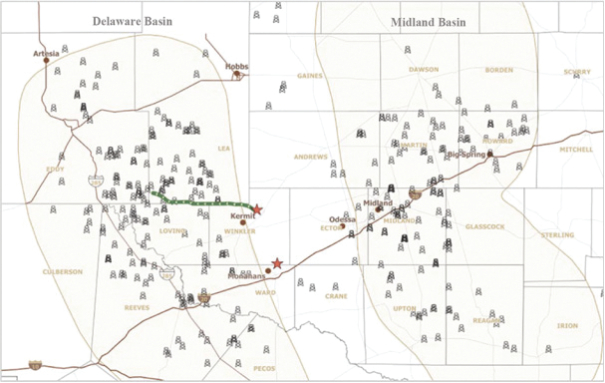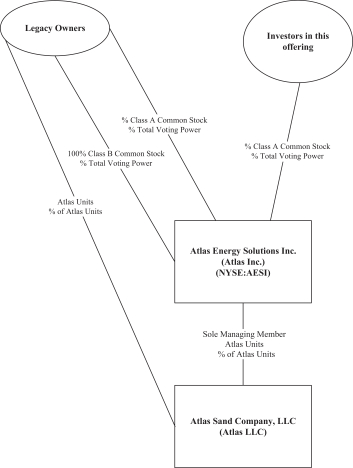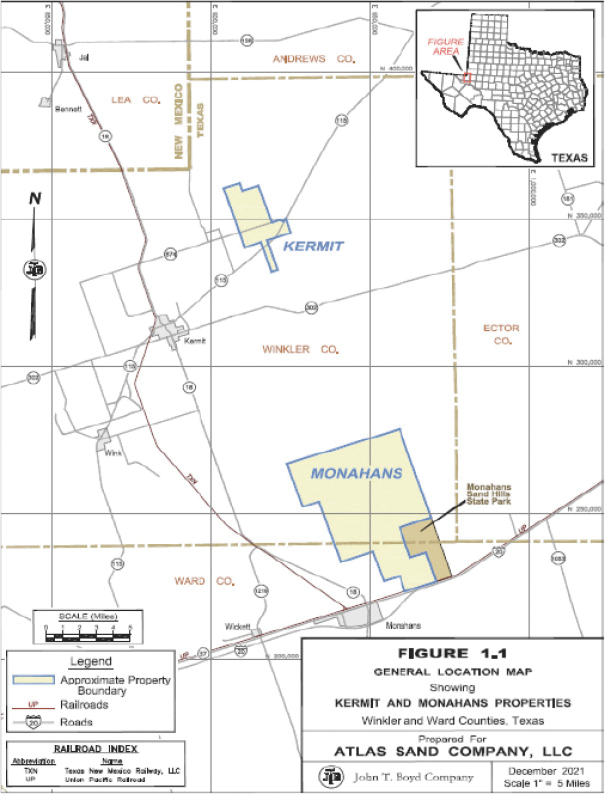The graphic below summarizes our estimates of the percentage reduction in the truck miles driven and associated emissions and emission costs attributable to the anticipated operation of our inaugural Dune Express conveyor system as compared to current, traditional practices.

Our management team has been proactive with respect to the protection of the dunes sagebrush lizard (“DSL”) and its habitat in an effort to reduce the risk that our business and operations will be materially interrupted in the event that the DSL is listed under the Endangered Species Act (“ESA”). We have adopted numerous best practices to promote active conservation measures for the benefit of the DSL, including our identification of up to 17,000 acres of land for potential set asides, our pursuit of more environmentally friendly mining practices and our participation in the Candidate Conservation Agreement with Assurances (“CCAA”) for the DSL. See the subsection titled “—Competitive Strengths—Proactive approach to the well-being of the environment and our employees” below. In January 2021, the CCAA was approved by the U.S. Fish and Wildlife Service (“USFWS”) to provide a framework for entry into voluntary conservation agreements between the USFWS and stakeholder participants, under which the parties work together to identify threats to the DSL, design and implement conservation measures to address these threats and monitor their effectiveness, among other things. Atlas has been a supporter of the CCAA since its inception and was the first proppant producer to apply for a permit under, and be accepted into, the CCAA. Due to our participation in the CCAA and other conservation measures that we have voluntarily adopted, we do not anticipate that a listing of the DSL as an endangered species would materially reduce sand production at our Kermit and Monahans facilities. We are currently only one of three companies participating in the CCAA. In the event that the DSL is listed as an endangered species under the ESA, it is possible that companies that are not participants in the CCAA at the time of a future ESA listing would see a disruption to their operations.
Social
We have committed to fostering a safe environment at our worksites and we are committed to extending this culture of safety far beyond our premises. We have a rigorous safety training program with well-developed protocols. We have automated or have invested in remote operations technology to substantially reduce the amount of the activities at the plant sites that require physical interaction between human beings and industrial equipment, and in doing so have removed many of the safety hazards at our facilities.
We anticipate that our planned Dune Express project will provide significant environmental benefits, while also benefitting the surrounding region, making it a safer place to live and work. Our management’s analysis of the results of the Transportation Study supports our expectation that the Dune Express will contribute to a meaningful reduction in Permian Basin traffic accidents, congestion and automobile fatalities, by taking trucks off public roads and operating in a much more efficient manner than the industry has historically operated. We believe this will also benefit the community by reducing the wear and tear on local infrastructure, while making the region a safer and better place to
5






